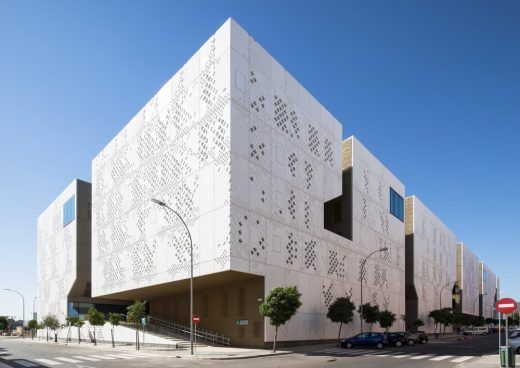Monthly Report for February 2019 by Brian Carter, Building Types, Architecture Article
Monthly Report for February 2019 by Brian Carter
Architectural Design & Buildings Discussion – article by Brian Carter, Buffalo, NY, USA
Mar 15, 2019
Monthly Report for February 2019 by Brian Carter
Buffalo Calling
February was defined by a Polar Vortex, hazardous wind warnings, frozen roads, unusually hot days in London, a week of record winter heat in the UK and an ice tsunami – extreme events that closed public schools and university campuses, lifted off roofs, stalled public transport and emptied cities into parks.
At times like these an architect’s thoughts turn, perhaps inevitably, to buildings. Considerations and anxieties about how they are designed extend to speculations about appropriate sitings, the selection of materials, decisions regarding systems of detailing, assemblies and chosen methods of construction.
Questions of whether buildings can withstand or recover from increasingly extreme weather as well as unpredictable conditions highlight not only the complexities of design but also the vulnerabilities of communities worldwide. Concerns regarding food supply and security extend globally while increasing dependence on food banks, community pantries and soup kitchens highlights local stresses. And after years of austerity, the hollowing out of public services and decline of community health and care have simultaneously prompted new needs for shelter and support for a growing number of people.
The presence of the homeless in London, San Francisco, Sydney or Delhi is conspicuous while at the same time there is an increasing number of victims of natural disasters – whether Storm Sandy or Camp Fire – who are forced to seek assistance. Although those urgent needs are familiar, architects, developers, investors and public agencies – appear unable or unwilling to respond in meaningful ways.
A resilient architecture has to be capable of responding to chronic stress and sudden acute shocks. Yet what might this resilient architecture look like? Are we to be bunkered in or hunkered down in spaces of resistance that recall the cold war, re-assert ‘long life/ loose fit’ or head for the hills while re-turning the pages of dog-eared copies of the ‘Whole Earth Catalogue’ in a search for inspiration?
If the architectural profession finds it difficult to address these issues then what of architectural education? It is tempting to consider that needs for greater resilience in architecture might perhaps prompt alternative patterns of teaching – patterns based on more focused collaboration, making and testing as fundamental activities in the design studio, serious interrogations of cost and explorations of its potential to shape form.
A recent report on resilience in the community prepared by the Urban Sustainability Directors Network – an agency that helps cities and partners to implement pilot projects in communities throughout the United States and Canada – recommends “existing well-used and well trusted buildings as the core of a Resilience Hub”. Hopefully contemporary architecture can also become a part of that well-used and well trusted building stock.
Brian Carter, a registered architect in the UK, is Professor of Architecture at the University at Buffalo, The State University of New York.

Brian Carter
American Architecture Links : links
New Palace of Justice in Cordoba design by Mecanoo architecten

photo © Fernando Alda
Granada Architecture Walking Tours
Articles by Brian Carter – Selection
Monumental shifts/New World Orders

photograph : Hufton + Crow
Old World / New World Architecture
Comments / photos for the Monthly Report for February 2019 by Brian Carter Article page welcome





